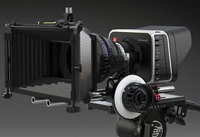There’s certainly a lot of buzz on video industry blogs and websites about new “RAW capable” cameras, such as the new Black Magic Cinema Camera and the recently price-reduced RED ONE MX. These cameras both shoot “RAW” video – or video that is uncompressed and, therefore, much greater in quality and clarity. This is a pretty big deal in my industry – the dynamic range and flexibility for editing of RAW footage is incredible compared to that of compressed video footage. That quality and flexibility was something previously only available for budgets exceeding $30,000 for the camera setup alone.

But, as is the case with every innovation, there are cons to counter every pro. True, when I compare these new cameras to my current DSLR, the cost to quality of video ratio is much higher. But there’s a catch – the space required to store RAW video is astronomical. [This article from nofilmschool.com goes into detail with the Black Magic camera.] For example – these new cameras would require at least 670 gigabytes to shoot all the footage for a 6-minute web video. Currently, I require an average of 30 gigabytes in my workflow with a DSLR.
This jump in storage requirements (including redundant backups of all footage) could put most production and media organizations in a bind regarding workflow and, of course, cost. It’s not very plausible in production for TV and web to shoot RAW video with these requirements.
While it is very exciting to see such incredible cameras become so affordable, I think that RAW just isn’t accessible enough until we can get around the storage required. Plus, I’ve produced some of my best work with DSLRs – so I can’t see myself moving to a RAW video workflow. …at least not yet.
